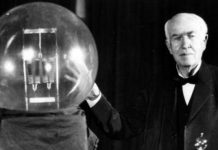Bill That Allows More Foreign Workers Comes Under Harsh Criticism

The I-Squared bill, sponsored by Sen Orrin Hatch, R-Utah aims to increase the number of foreigners with advanced degrees allowed to work in the United States.
Proponents say it is a necessary measure, keeping U.S.-educated foreigners and their skills in the workforce and filling STEM positions that companies cannot otherwise fill. Opponents say loopholes in the law open up the possibility of abuse and corruption, essentially opening the job market to cheap foreign labor and onshore outsourcing.
The bill would increase the cap on H-1B visas from 65,000 workers each fiscal year to between 115,000 and 300,000.
Revisions to the H-1B visa cap are being criticized as a way to make it more difficult for U.S. workers to compete against foreign workers who come into the country with advanced degrees for jobs in science, technology, engineering and math (STEM). H1B visas allow United States companies to employ temporary workers in specialty jobs, including STEM.
The Republican-led Senate Judiciary Committee heard arguments about the bill Tuesday. Chairman Chuck Grassley, R-Iowa, said the bill “doesn’t close the [program’s] loopholes or prevent abuse. It doesn’t make sure that American workers are put before foreign workers. It only increases the supply of cheaper foreign labor.”
Adding fuel to the fire are the recent layoffs at Southern California Edison utility company to replace Information Technology employees with workers from India. Some 400 employees are being replaced with lower-cost foreign employees.
The bill, dubbed the Immigration Innovation (“I-Squared”) bill, was introduced by Sens. Hatch, and Jeff Flake, R-Ariz., among others.
Senator Hatch and Flake both adamantly defend their position.
Sen. Hatch said, “In our global innovation marketplace, America cannot afford to continue to lose the talent we educate and train to our competitors. While opponents may attempt to question the need for high-skilled immigration reform, the facts prove otherwise. Our I-Squared bill is essential to creating American jobs, fueling our economic recovery, advancing our 21st century workforce, and maintaining America’s position as the world’s brightest beacon of innovation.”
Sen. Flake had something to say about all the backlash as well. “Today’s hearing reiterated what we already know: Our current immigration system is not meeting our needs. Along with other critical solutions, Congress needs to guarantee that our country remains a leader in innovation and global competition by ensuring access to the highly skilled talent U.S. companies need, a vibrant economy for homegrown and foreign entrepreneurs, and that U.S. universities continue to attract the best and the brightest from around the world.”
Encouraging others to understand the facts behind the bill would allow them to come to a more educated conclusion on what the bill is intended for:
High-Skilled Immigration Facts
- America, and American companies, need more high-skilled workers. This is an undeniable fact. America’s high-skilled worker shortage has become a crisis.
- Last year American companies were unable to hire nearly 90,000 high-skilled workers they need to grow their businesses, develop innovative technologies, and compete with international competitors.
- Supply-side economists have reported that a 10% growth in H-1B population would correspond to a 6%-12% growth in invention (measured as patents) among immigrant groups and a 0.5%-1% growth in patents by U.S. natives. [LINK]
- As the conservative American Enterprise Institute has confirmed, each foreign-born worker with a STEM degree who remains in the United States creates an average of more than 2.5 additional American jobs. [LINK]
- America will face a shortage of more than 220,000 workers with STEM degrees by 2018. [LINK]
- Foreign-born STEM workers complement the American workforce, they don’t take American jobs. [LINK]
- There is full employment for US STEM workers with advanced degrees: While the current national unemployment rate hovers around 8 percent, the unemployment rate for US citizens with PhDs in STEM is just 3.15 percent and 3.4 percent for those with master’s degrees in STEM. Given that the US government has defined “full-employment” to be 4 percent, this suggests a skills shortage of STEM professionals with advanced degrees.
- In many STEM occupations, unemployment is virtually non-existent: While the current national unemployment rate hovers around 8 percent, the unemployment rate for US citizens with PhDs in STEM is just 3.15 percent and 3.4 percent for those with master’s degrees in STEM. Given that the US government has defined “full-employment” to be 4 percent, this suggests a skills shortage of STEM professionals with advanced degrees.
- STEM fields employ a far higher proportion of foreign workers than non-STEM fields: In STEM fields, 26.1 percent of workers with PhDs are foreign born, as are 17.7 percent of workers with master’s degrees. In comparison, in non-STEM fields, just 6.4 percent of doctoral workers and 5.2 percent of master’s workers are foreign born.
- STEM fields with high percentages of foreign STEM workers have low unemployment rates for US workers: Although nearly 25 percent of Medical Scientists are foreign born, US Medical Scientists enjoy an unemployment rate of just 3.4 percent, fully five percentage points lower than the non-STEM unemployment rate (8.4 percent). Similar stories exist for STEM occupations such as physical scientists and computer software designers, where immigrants make up more than 20 percent of the field and unemployment is just 4 percent. Unemployment across all STEM occupations is just 4.3 percent, and the unemployment rate is actually lower than that average in 10 of the 11 STEM occupations with the largest proportion of foreign workers.
- Foreign-born STEM workers are paid on par with US STEM workers: There is no verifiable evidence that foreign-born STEM workers adversely affect the wages of American workers by providing a less expensive source of labor. The average STEM worker actually makes slightly more than his or her US counterpart, earning on average $61 more per week.
Flake also said he has heard the new visa cap is welcome in the corporate world.
“They say they have jobs they advertise for that simply go unfilled,” he said.






